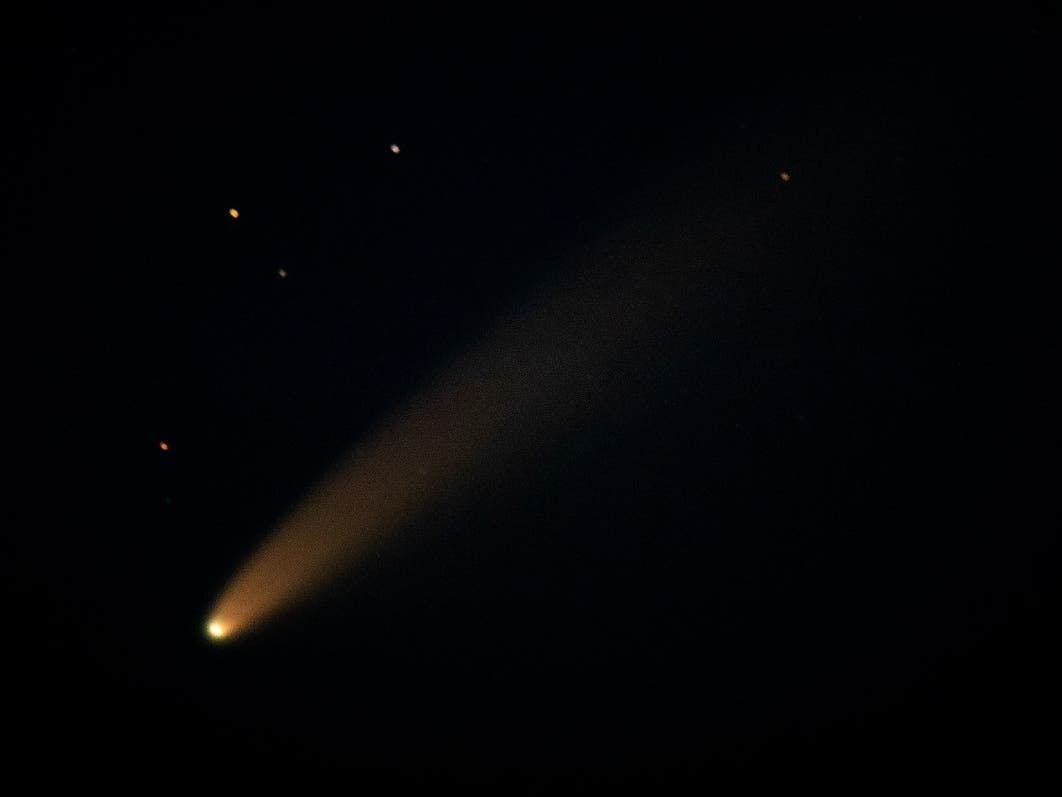Community Corner
Comet Neowise: How To See The Brightest Comet In 23 Years
Comet Neowise is going prime time, moving into the evening sky. You'll be able to see it with the naked eye on several evenings in July.

ACROSS AMERICA — Comet Neowise has entered our solar system, and you’ll be able to see it in the skies for the next couple of weeks. To see the brightest comet in nearly a quarter of a century, all you need is a little patience.
Comet Neowise has been visible in the east-northeast sky with the naked eye about an hour before sunrise for the past month. The comet, which NASA says could become known as the “Great Comet of 2020,” is going prime time, though, and this week is visible in the evening sky.
It will appear in the northwestern sky about an hour after sunset, below the Big Dipper, according to NASA.
Find out what's happening in Across Americawith free, real-time updates from Patch.
The best dates to see it are now through Sunday, according to Space.com.
Comet Neowise has been a big hit with skywatchers, but “the best is yet to come,” veteran comet observer Terry Lovejoy told Space.com.
Find out what's happening in Across Americawith free, real-time updates from Patch.
Though you’ll be able to see it without a small telescope or binoculars, weather permitting, those instruments offer better views.
Sky & Telescope says Comet Neowise will appear just as the last of twilight fades into darkness. The Big Dipper hangs by its handle at this time, so look about three fists below the “bowl.”
Comet Neowise will fade after July 19 as it comes closer to our planet. Its closest approach to Earth occurs on July 22, after which it will fade more rapidly and eventually disappear from our solar system.
The comet has brightened 100-fold since June 9, and is only getting better — especially for those with an aversion to early mornings.
The comet appears to rise tail first, followed by its bright head or coma, which Space.com said shines “as bright as a first-magnitude star” — a designation reserved for the brightest of stars. For comparison purposes, Polaris, the North Star, is a second-magnitude star.
Comet Neowise appears low on the horizon, so early morning viewers will need to plan to get away from trees and buildings. It’s also competing with a nearly full moon, which can make it hard to see.
Relatively new in the continuum of time, Comet Neowise hasn’t made an appearance in our solar system for 6,800 years.
NASA says the comet is an inner-solar system “intruder” that could become known as the Great Comet of 2020. It’s large by comet standards, measuring about 3 miles across.
The comet is the brightest to visit Earth since Comet Hale-Bopp made an appearance in 1997.
Get more local news delivered straight to your inbox. Sign up for free Patch newsletters and alerts.